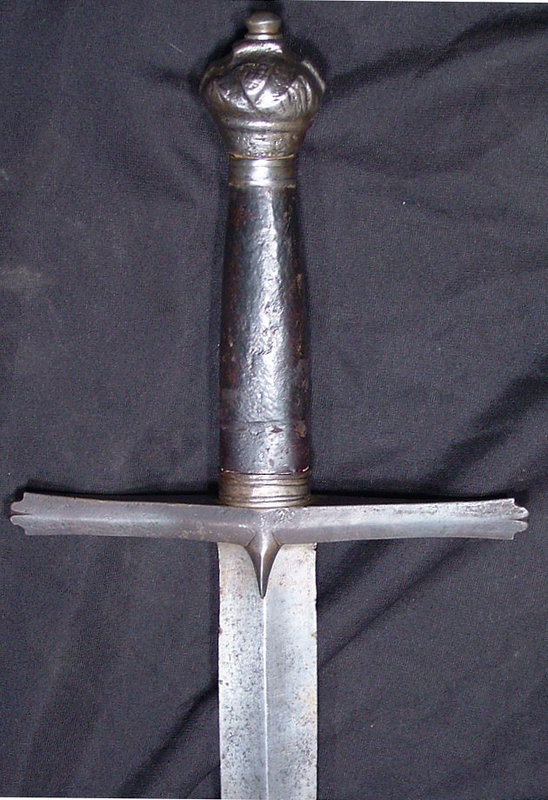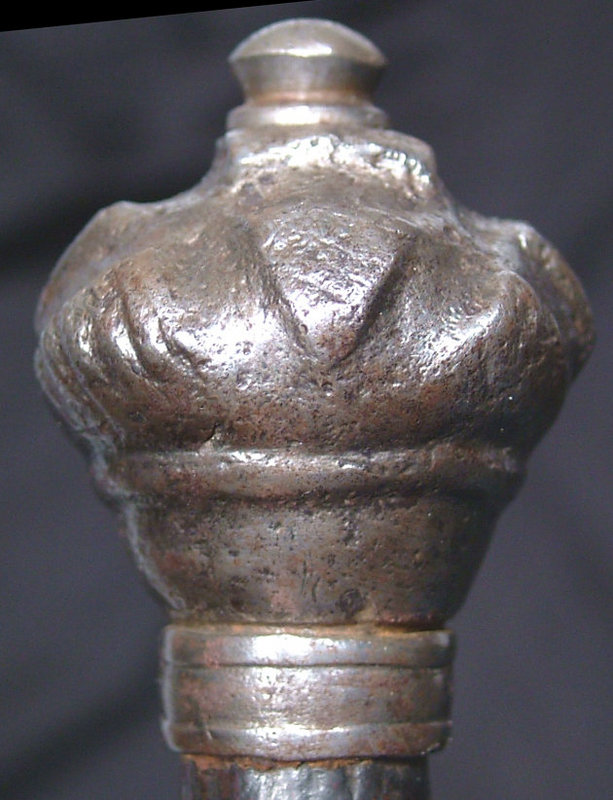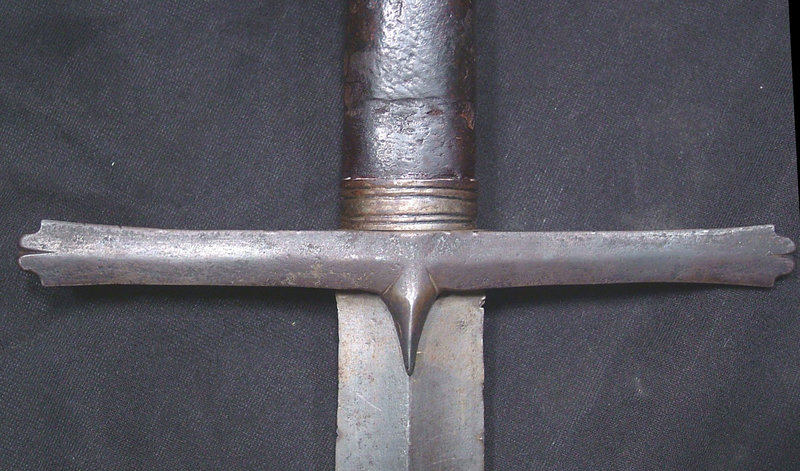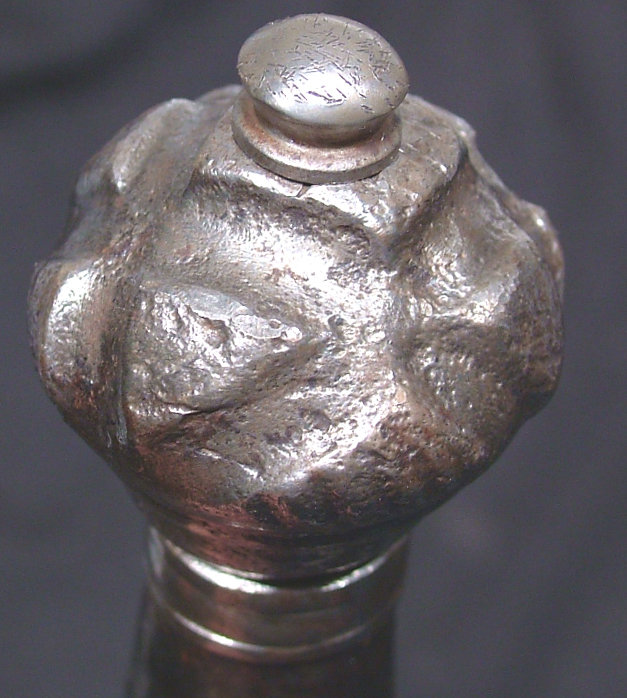Posts: 21
Tue 09 Sep, 2008 4:26 pm
another interesting sword
Posts: 37
Tue 09 Sep, 2008 6:41 pm
Looks like he destroyed a kaskara guard to make it look "medieval"
Jeff
 Attachment: 146.05 KB
Attachment: 146.05 KB
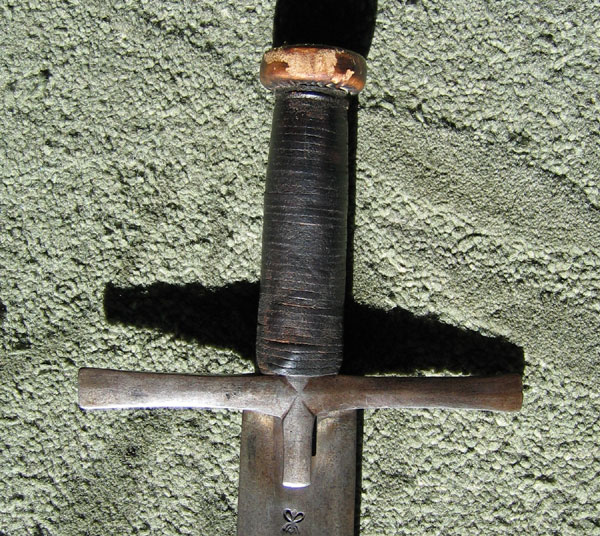
Posts: 21
Tue 09 Sep, 2008 7:19 pm
hmmm, jeff....
This comes from Faganarms....don't think it's that composite....
Bc
Posts: 21
Tue 09 Sep, 2008 7:45 pm
This is Plate 37b from
Oakeshott "Sword in the age..."
Pretty close other than the pommel:)
Plate 13 has the finials...
 Attachment: 92.49 KB
Attachment: 92.49 KB
[ Download ]
Posts: 9,545 Location: Dayton, OH
Tue 09 Sep, 2008 7:52 pm
| Brad Crisler wrote: |
This is Plate 37b from Oakeshott "Sword in the age..."
Pretty close other than the pommel:)
Plate 13 has the finials... |
Here's a better view of that sword:
[ Linked Image ]
Posts: 23 Location: USA
Tue 09 Sep, 2008 7:57 pm
That is beautiful!! I love the shape of the crossbar. and I actually like the pommel to, strange shaped as it may be.
I would snatch that thing up in a heartbeat.
Posts: 21
Tue 09 Sep, 2008 8:05 pm
Jeff-
So that I understand you:
You think this sword has been composed from a kaskara to resemble the
oakeshott 37b?
Bc
Posts: 37
Tue 09 Sep, 2008 8:49 pm
Hi Brad,
I am reasonably sure (as sure as I can be with out having the piece in my hands) that the crossguard is from a kaskara. the grip is not 16th century. Oakshott put the similar grip on 37B on in 1961 the original is seen on 19C. The blade I cannot tell possibly 16th century may also be as late as 19th century. Do you have any measurements?Again, I would not like to bet on it unless i see it in person.
The pommel as stated is a later addition and the tang button is ridiculous.
Well that is my initial take for what it is worth..
All the Best
Jeff
Posts: 1,265 Location: Malaysia
Wed 10 Sep, 2008 2:33 am
Another Interesting Sword
You are right, Brad. This sword is from the Faganarms website and I've seen it before.
Posts: 21
Wed 10 Sep, 2008 7:32 am
Thanks for the discussion guys...
I will probably pass on it...
In all fairness, William Fagan himself told me that I probably wouldn't be happy with it long term if my collection progressed...
Thanks again,
Bc
Posts: 919
Thu 11 Sep, 2008 4:58 am
BTW
By looking at the pommel's closing cap, one will notice that time has eroded well the pommel's surface, craters are irregular and their brim is not sharp.
The pommel's surface has been clearly modeled by rust and use, showing a lack of definition in its details.
On the other hand, the cap show a neat, clean and never eroded surface, only marred by shallow, sharp and narrow lines: lines that are probably made intentionally to show some aging, to let the cap match better the pommel's age.
Naturally this could be the work of a restorer, somebody with good intentions, such as to recreate an old piece just for appearance in modern times, let's say the Victorian era in England or in Italy or Germany.
Recently I entered an arms chamber in a nineteenth century castle, a castle rebuilt in a decent manner over the ruins of the real one by an earl in the late nineteenth century.
Most pieces were covered with reddish, recent rust, with no pitting, rust, had a good appearance from a distance, most of them were actually fake.
Two zweihanders attracted my attention: the blades were heavy and crude, hilts were fancy and a bit disproportionated, but the pommels of both blades were good: as in the case of our blade in question, they were pitted irregularly, with the surface eroded by rusting an cleaning.
As I mentioned before, many of such pommels ended their career, at least here in Italy, as scale weights, so surviving the swords they had belonged too.
You
cannot post new topics in this forum
You
cannot reply to topics in this forum
You
cannot edit your posts in this forum
You
cannot delete your posts in this forum
You
cannot vote in polls in this forum
You
cannot attach files in this forum
You
can download files in this forum
